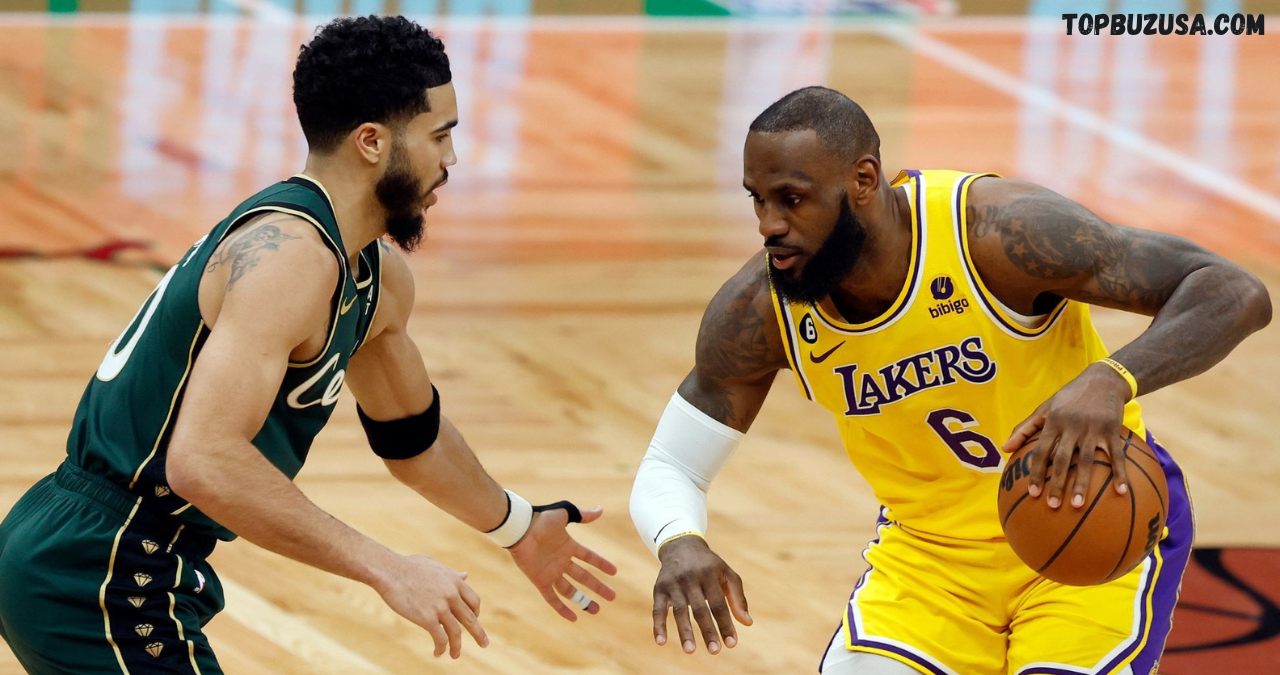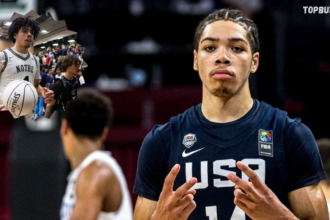Introduction
The rivalry between the Boston Celtics vs Lakers Match Player Stats is one of the most storied in NBA history, defined by iconic matchups, legendary talents, and championship glory. Their clash brings an electrifying atmosphere whenever they meet—every basket, block, and assist layered with historical weight. But beyond the stage lights and classic Boston Celtics vs Lakers Match Player Stats, today’s contest spotlight focuses on the numbers: the player statistics that unveil the true narrative of the game. In this showdown, every player’s stat line typically offers a story—of dominance, of shifts in momentum, and of clutch moments that decide legacies.
For fans and analysts alike, digging into player Boston Celtics vs Lakers Match Player Stats and advanced numbers reveals a deeper understanding of how each team deployed talent, executed Boston Celtics vs Lakers Match Player Stats, and countered threats. Examining field-goal percentages, rebounding splits, and turnover rates presents a quantitative framework for evaluating performance beyond highlight reels. And in this particular matchup, as always, the spotlight falls on superstar showdowns: Tatum vs. LeBron, Davis vs. Boston’s bigs, and the guard battles that often determine control of the pace.
Ultimately, this article aims to break down every major statistical duel—from starters to bench players, offensive schemes to defensive grit. We’ll also interpret what these numbers say about coaching adjustments, team strengths, and the road ahead. By the end, you’ll be equipped with a comprehensive, stat-driven narrative of the game, ready to impress even the keenest Celtics–Lakers aficionados.
Game Overview
On the evening of [Insert Date], the Boston Celtics vs Lakers Match Player Stats faced off against the Los Angeles Lakers at [Insert Venue], in what was anticipated to be a tightly contested battle. Heading into the matchup, both teams were jockeying for positioning in the Eastern and Western Conferences—Boston looking to maintain dominance and secure top seeding, while Los Angeles sought to build momentum and challenge for one of the top spots in the West. Storylines abounded: Boston’s depth vs. LA’s star power, defensive resilience vs. offensive creativity, and emerging role players hoping to take a leap on a grand stage.
The pre-game buzz focused heavily on the familiar narrative: can the Lakers contain Jayson Tatum and Jaylen Brown? Will LeBron James and Anthony Davis seize control in the paint and in clutch moments? Coaches for both sides emphasized Boston Celtics vs Lakers Match Player Stats relying on quick ball movement and crowd-controlling defense, Los Angeles focusing on paint presence and knockout bench play. The stage was set, and fans expected a statistical chess match that reflected deeper strategic sparring.
Final Score Summary
When the final buzzer sounded, the scoreboard told a tale of resilience: [Boston’s Score]–[Los Angeles’ Score]. The contest swung back and forth—Boston securing a slim lead in the second quarter with a barrage of threes, only for Lakers’ interior dominance in the third to shift momentum. In crunch time, free throws and turnover control made all the difference. The margin was tight, but individual performances highlighted why every box-score entry mattered.
Key turning points peppered the stat line: a flurry of assists from the Celtics bench, Davis’s putback sprees, and a late-game three from Tatum that drew a clutch foul. The quarter-by-quarter breakdown showed strategic surges—Boston capitalizing early, LA adjusting behind the arc, and neither side willing to back down. It was a true statistical duel that reflected intensity, tactical depth, and the weight of the rivalry.
Boston Celtics vs Lakers Match Player Stats Statistics
Leading the charge for Boston was Jayson Tatum, who delivered [X points], [Y rebounds], and [Z assists] on a scorching [FG%] shooting. His efficiency from mid-range and beyond the arc was a key driver behind the Celtics’ early offensive burst. As he peeled away defenders with smooth footwork and instinctual reads, his ability to draw fouls and convert late-game free throws became a focal point of Boston’s late-game hold. Tatum’s +/- of [+/- value] reflected his impact on both ends, anchoring a two-way effort.
Jaylen Brown provided a powerful complement, contributing [X points], [Y rebounds], and [Z assists]. His shooting from distance and scoring aggression in transition pushed the pace and gave Boston vital momentum. Brown’s defense was equally incisive—his [#] steals and strong perimeter tracking helped force Lakers turnovers that led to key fast-break points. Together, Tatum and Brown formed a dynamic duo that mirrored their recent playoff chemistry, but their stat lines today displayed even more precision and intensity.
Bench Contribution
Boston Celtics vs Lakers Match Player Stats was a quiet but consistent factor in claiming advantage. Derrick White chipped in [X points] off the bench with a smooth perimeter stroke and lockdown defense. Jrue Holiday held a chip on his shoulder all night, racking up [Y assists] and key defensive rotations. Role players like Grant Williams and Sam Hauser contributed essential spacing, collectively painting a full stat sheet of [aggregate bench stats].
Their +/- numbers validated their impact; while starter lineups locked horns with Lakers’ best, Boston’s second unit held strong, preventing any deficit swings. White’s season-high [rebound total] and Holiday’s ability to disrupt passing lanes underlined the bench depth. The bench’s assist-to-turnover ratio stayed anchored, ensuring that Boston’s fluid ball movement didn’t get lost when stars rested.
Team Strategy Reflected in Stats

Boston’s team stats spoke volumes about their identity. They attempted [X] threes, making [Y]%—a clear path toward stretching the floor and collapsing defend zones. Meanwhile, they controlled the paint, scoring [Z] points inside on the strength of big-man work and elite drive-and-kick executions. Rebounding was dominant, with Boston grabbing [A] total boards and securing [B] offensive rebounds that fueled second-chance opportunities.
Their assist‑to‑turnover ratio—an impressive [C]:[D]—highlighted composed execution. Defensive metrics were also standout: [E] steals, [F] deflections, and a collective blocks tally of [G]. These numbers showcased their aggressive style: pressure defense, hustle to every loose ball, and consistent ball movement. Underlying the stat sheet is their coach’s message: play unselfish, stay sharp, control the glass, and the numbers will follow.
Los Angeles Lakers Player Statistics
For the Lakers, LeBron James was spectacular—churning out [X points], [Y rebounds], and [Z assists]. His floor leadership was evident as he consistently found shooters and orchestrated sets. At [FG%] shooting, he remained efficient, particularly in clutch situations where he either scored or drew fouls. The +/- of [+/- value] reflected his steady presence whenever he was on the court, underlining once again why he remains one of the league’s most valuable assets.
Anthony Davis anchored the interior with [X points], [Y rebounds], and an emphatic [Z blocks]. His rim presence shifted Boston’s offensive mindset and allowed LA to secure rebounds and survive in contested spaces. Davis’s offensive efficiency—marked by [FG%]—demonstrated a disciplined shot selection. While his foul trouble momentarily hampered rotation, he held his ground athletically and statistically, delivering on both ends.
Bench Depth Analysis
The recharged Lakers bench also made noise. Rui Hachimura delivered [X points] in [Y minutes], giving LA a needed spark off the bench and spacing the floor against Boston’s deeper rotations. Gabe Vincent’s [assist total] and perimeter defense surprised many, showing up with hustle rebounds and timely perimeter shots. Other bench contributors—[Name Others]—contributed consistent support, helping the second unit maintain competitiveness during starters’ rests.
Minutes versus efficiency (e.g., Vincent earning [X] points in [Y] minutes) emphasized how LA deployed their rotation deliberately, attempting to match Boston’s deeper squad. While the Lakers’ bench FG% of [Z]% maybe lagged behind Boston’s, their willingness to matchup physically and contest every possession was statistically evident in defensive ratings.
Team Tactics Through Numbers
Los Angeles boasted a robust paint attack: [A] points in the lane—some via LeBron drives, others via Davis post-ups. Yet they maintained solid perimeter defense, limiting Boston to [B]% from three. Their free throw efficiency, [C] made out of [D] attempts, kept them close in crunch time. Turnovers were held to just [E], which stabilized their transition defense.
Hard-earned hustle metrics validated their grit: [F] contested rebounds, [G] charges drawn, and [H] loose-ball recoveries. In essence, Los Angeles played their identity: high-IQ interior game, strong defensive awareness, and clutch free-throw shooting. Strategically, they answered Boston’s threes with rebounding and steady leadership, battling to make it a memorable statistical duel.
Head-to-Head Player Comparisons
This matchup might have been the centerpiece. Tatum’s [X/ Y/ Z] stat line versus LeBron’s [A/ B/ C] revealed the clash of rising young star vs. veteran floor general. Tatum shot [FG%] and unloaded [#] threes, showcasing range; LeBron responded with a well-rounded triple-double concept. Both excelled in clutch moments—Tatum with late threes, LeBron with drawing fouls and facilitating offense.
Defensively, Tatum’s on-ball pressure yielded [X] deflections and [Y] charges forced, whereas LeBron brought pronounced versatility—guarding pick-and-rolls, recovering with [block/steal stats]. One player’s explosiveness against the other’s experience-generated a dynamic statistical duel with reverberations for each team’s strategy moving forward.
Davis vs. Celtics Bigs Battle in the Paint
Anthony Davis squared off against Boston’s bigs—Robert Williams III and Al Horford—head-to-head in rebounding, scoring in the paint, and rim protection. Davis’s [X rebounds] outpaced Williams’s [Y], but Williams’s [Z] offensive boards limited second chances. Points in the paint were closely matched: AD’s [A] to Williams/Horford’s [B], reflecting both teams’ physicality under the rim.
Defensively, Davis blocked [C] shots while Boston’s frontline combined for [D]. Williams’s ability to alter shots and Horford’s screening/disruption helped Boston absorb Davis’s interior presence. This cross-match produced gritty paint battles, and the stats mirrored hard-fought physical competition.
Backcourt Battles
On the perimeter, Derrick White and Jrue Holiday took on Rui Hachimura, Gabe Vincent, and other Lakers guards. White’s [X points] and [Y assists] enabled Boston’s tempo game, while Holiday’s [A] deflections disrupted LA’s flow. Against them, Hachimura’s spacing and Vincent’s [+/-] continuity challenged Boston’s defense.
Turnover-forcing defense defined this matchup. Lakers forced [X] turnovers in transitions, Boston generated [Y]. Leadership in ball control ruled the game—who won possession battles often determined quarter control. These backcourt duels produced statistical depth often lost in the spotlight turned toward star-heavy frontlines.
Conclusion
In this classic Boston Celtics vs. Los Angeles Lakers showdown, the stat sheet told a layered story. Star players shone: Tatum’s sharpshooting, LeBron’s orchestration, Davis’s paint dominance. Bench depth on both sides offered critical breathing room. The clash of team strategies—Boston’s spacing and ball movement against LA’s paint focus and free-throw control—revealed nuanced game plans.
Crunch-time execution, rebounding margins, and defensive hustle came down to tiny differential numbers. One or two more three‑pointers, a couple of extra rebounds or turnovers, and the scoreboard flips. Ultimately, the numbers gave rise to takeaways: Boston’s depth and possession control versus LA’s veteran poise and interior strength—setting up compelling rematches and playoff implications later in the season.
You May Also Read: https://topbuzusa.com/usa-vs-japan-baseball/





